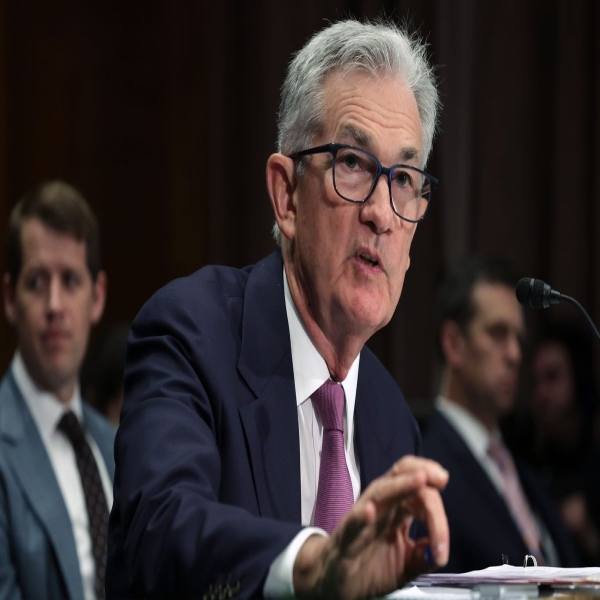The Fed is looking to slow but not stop its aggressive approach to inflation.

Nicole Narea covers politics and society for Vox. She first joined Vox in 2019, and her work has also appeared in Politico, Washington Monthly, and the New Republic.
The Federal Reserve raised interest rates by a 0.25 percentage point Wednesday to further fight inflation, bringing an end to a brief pause to rate hikes last month.
The change brings borrowing costs to a 22-year high range of 5.25 percent to 5.5 percent, an increase that will be felt by businesses and consumers alike. Though inflation has come down significantly in recent months, it’s still above the Fed target rate of 2 percent. In June, the consumer price index, viewed as a proxy for inflation, was still 3 percent, despite being the lowest it’s been since March 2021.
Some analysts think Wednesday’s interest rate hike was unnecessary, in part because the Fed’s previous 10 consecutive rate hikes over the last year may have a delayed effect on the economy (though most are still largely optimistic that it won’t trigger a recession).
Fed Chair Jerome Powell addressed those concerns in a news conference Wednesday, saying, “In determining the extent of additional policy firming that may be appropriate to return inflation to 2 percent over time, the committee will take into account the cumulative tightening of monetary policy, the lags with which monetary policy affects economic activity and inflation, and economic and financial developments.”
Overall, it seems that the Fed is looking to slow, but not stop, its aggressive approach to inflation. Powell refused to send a strong signal about the Fed’s strategy heading into the final months of the year, including whether another pause might be on the way on Wednesday, only promising that the Fed will make decide what to do with interest rates based on data.
“We remain strongly committed to bringing inflation down to our 2 percent goal,” Powell said. “We will continue to make our decisions meeting by meeting, based on the totality of the incoming data and their implications for the outlook for the economic activity and inflation as well as the balance of risks.”
Essentially, as Moody’s Analytics economist Matt Colyar told Vox ahead of the announcement, “We think June’s inflation report is kind of a harbinger of the next couple, and that’ll give them the confidence to kind of wait and see.”
Is a recession looming?
The Fed must strike a delicate balance. If it raises interest rates too high, it risks sending the US into a recession, something some analysts have projected the US could enter later this year.
There are some signs that a recession could happen, including dropping mortgage demand, low confidence readings from small businesses, and a manufacturing contraction. But Colyar said that other economic indicators — including strong job and wage growth, low unemployment, and high consumer spending on services — suggest that a recession won’t happen at all, and if it does, it would likely be a mild one. Powell said Wednesday the Fed now also believes a recession is unlikely.
“It’s our belief that the US economy avoids recession and that the Fed’s next rate hike, which everybody expects this afternoon, is more than we think is needed,” Colyar said. “It is unnecessary when conditions are already tight enough for inflation to come down to the Fed’s target.”
Many economists agree. A July Bloomberg survey of business economists found that a strong majority believe that the likelihood of a recession in the next year is now 50 percent or less.
That optimism might not be consistent with what happened during other historical inflationary episodes, including in the early 1980s. But it’s true that the circumstances seem different this time around: The pandemic caused massive supply issues that caused significant economic volatility, but not the “kind of familiar inflation credit cycle dynamics that we’ve seen in other recessions,” Colyar said.
Should the US avert a recession, it likely means that any interest rate cuts won’t happen until June 2024, Colyar said.
“I think they are going to sit and wait for upwards of a year,” he said. “And that aligns with inflation slowing, the [Fed board of governors] feeling really confident that inflation is where they need it to be, if not trending toward it.”
Update, July 26, 3:05 pm ET: This story was published on July 26 and has been updated multiple times, most recently to include comments delivered by Federal Reserve Chair Jerome Powell.
Source: vox.com






